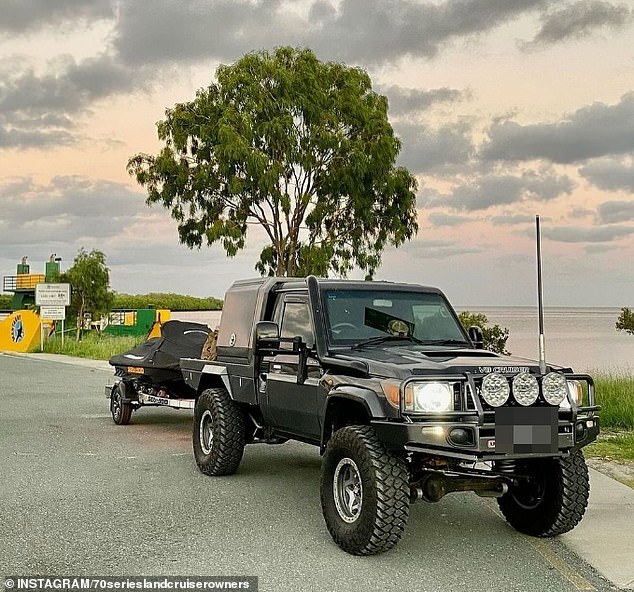How Aussies can get cash back on their tax return by buying a new vehicle or ute: Here are all the expenses you can claim
A professional can deduct the cost of a heavy van from taxes, regardless of the price.
A conventional car worth up to $68,108 can be claimed as tax.
But if the job requires a van, there are no cost limits. Many popular workhorses now cost hundreds of euros.
This is good news for artisans, farmers and business owners who purchase a vehicle for their livelihood.
Someone who buys a vehicle for work purposes can claim eight years’ worth of tax returns, no matter how big or small the company is.
Small and medium-sized enterprises with a turnover of up to $10 million can also declare work-related assets worth up to $20,000 in a single financial year under the ‘direct asset write-off’.
With the end of the tax year just around the corner, here’s how to declare some major expenses as taxes.
Reporting large expenses on taxes can reduce an individual’s taxable income, maximizing refunds.
Uten
There are no price limits when it comes to purchasing a pickup truck, provided it can carry more than one ton and is not designed to carry passengers.
That means a new $75,600 Toyota LandCruiser 70 Series pickup with only two seats can be deducted from one’s taxable income.
An entrepreneur can claim the cost of a new car on his taxes, but there are more options for buying an expensive car (pictured is a construction worker in Sydney)
This popular workhorse carries 1.3 tons on the bucket and can pull 3.5 tons.
Late-model LandCruisers often sell for over $100,000, as the waiting list for a new pickup is long.
Mark Chapman, director of tax communications at H&R Block, said a business owner who needs to haul heavy loads has more options when it comes to reporting a pickup truck on tax.
“Certain large, expensive, heavy cars are not affected by the expensive car limit and the full purchase price can be written off instead,” he told Daily Mail Australia.
‘If the van is classed as a commercial vehicle, in other words if it is designed to carry a load of over one tonne and is not primarily designed to carry passengers, then the full cost can be claimed regardless of the cost.’
Cars
Vehicles that carry up to nine passengers and have a payload of less than one tonne are classified as cars. A business owner can claim a vehicle worth up to $68,108.
“They can claim depreciation over the effective life of the vehicle,” Chapman said.

That means a $75,600 Toyota LandCruiser 70 Series ute, with just two seats, can be deducted from one’s taxable income, along with second-hand examples of the latest model that typically sell for more than $100,000.
‘This depreciation can only be claimed up to the maximum amount for expensive cars of $68,108 in the case of cars.’
Regardless of the type of vehicle, the Australian Taxation Office considers cars to have an eight-year useful life, meaning the costs must be depreciated over eight years of tax returns.
Immediate depreciation of assets
Carpenters and plumbers buying tools, farmers buying machinery, or pizzeria owners buying a cheap delivery truck can also declare individual items worth up to $20,000 as part of the direct depreciation of assets.
This means that the full cost in one tax year can be claimed on the next tax return for 2023-2024, rather than having to amortize the cost over multiple tax years.
But this relief is only available to small businesses with annual revenues of less than $10 million, under a relief program that launched in 2015.
“This is great for tech items like computers, tablets and phones, as well as tools and equipment for tradies and office furniture,” Chapman said.
However, items must be in use by June 30 and not purchased at the end of this financial year.
“If you order and pay for something between now and June 30, but it doesn’t arrive until July, you’ll have to wait until next year before you can make a claim,” he said.
“So essentially the item must be delivered, set up and available for use to qualify.”
The current $20,000 threshold for immediate asset write-offs will remain in place until June 2025, after being temporarily increased to $150,000 between October 2020 and June 2023 to cover some of the pandemic.
